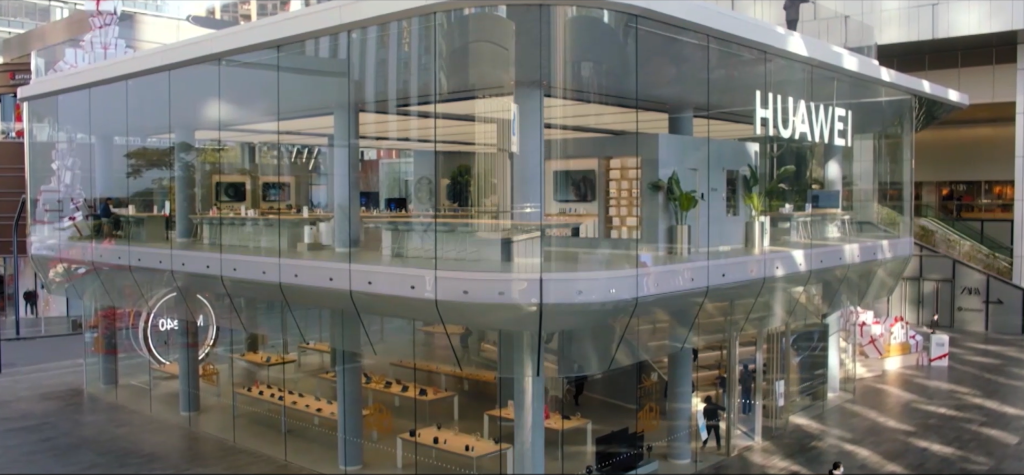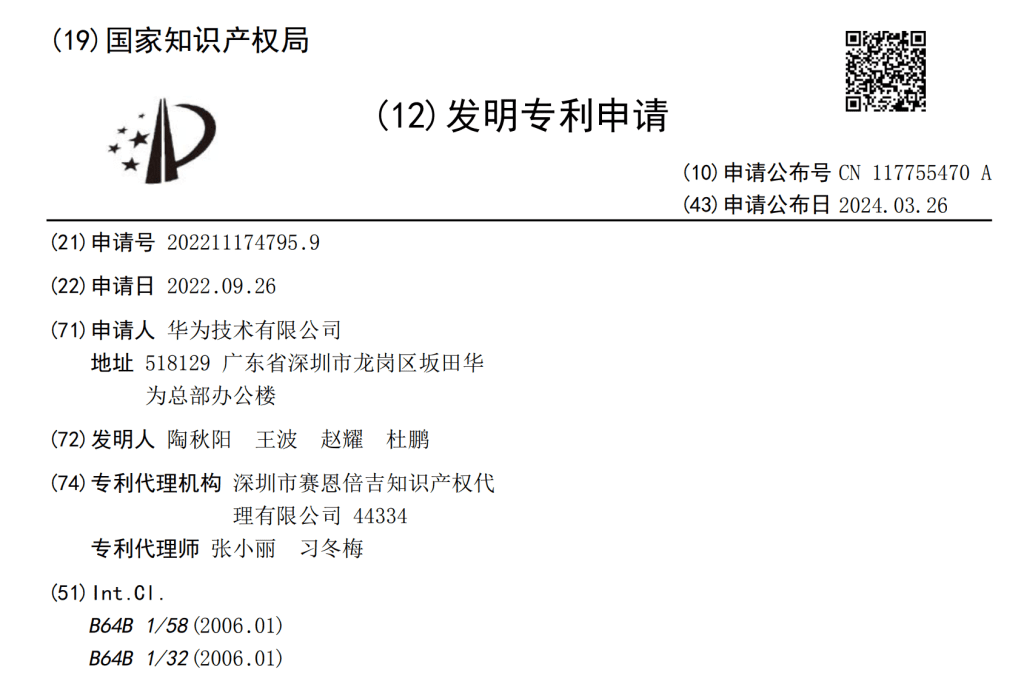In recent years, the concept of the “low-altitude economy,” which includes flying cars and eVTOLs (electric vertical takeoff and landing vehicles), has been gaining significant traction domestically. This trend is further fueled by emerging policies and proactive steps from various manufacturers.

Recently, Huawei Technologies Co., Ltd. disclosed a new invention patent for a “flying robot.” According to the National Intellectual Property Administration’s official website, this patent was filed on September 26, 2022, with the publication number CN117755470A. The applicants for this patent are Huawei Technologies Co., Ltd., and the inventors are Qiuyang Tao, Bo Wang, Yao Zhao, and Peng Du.

Patent Overview
Traditional multi-rotor drones and small unmanned helicopters are typically not permitted for indoor use due to safety concerns. Even small toy drones displayed in malls must fly within net cages. This highlights the significant limitations of traditional drones like multi-rotors and small helicopters for indoor applications. Additionally, the continuous lift required from the propellers of traditional drones results in high noise levels and short battery life. In the event of power failure or battery depletion, there is a high risk of crashing and causing injury.

Balloon Robot: A New Type of Flying Robot
The balloon robot, as a novel flying robot, uses the buoyancy of a balloon instead of the lift from propellers for flight. The uniquely designed flexible airbag overcomes the major safety challenge of indoor flight. Even if the airbag collides with people or objects in the environment, it typically does not cause harm. Furthermore, the balloon robot generally uses low-stretch thin-film airbags filled with helium for buoyancy, which do not explode even when punctured or exposed to flames, ensuring high safety. Due to the use of buoyant airbags instead of high-speed rotating propellers, the balloon robot also boasts long battery life, low noise, and low cost, expanding the potential for indoor applications of flying robots.
Details of the Flying Robot
Components:
- Airbag: Filled with gas, with a three-dimensional coordinate system set as X-axis, Y-axis, and Z-axis, where the Z-axis represents the height direction of the airbag.
- Four First Propellers: Arranged around the periphery of the inflated airbag, each connected to the airbag. The positions where the propellers connect to the airbag lie in a plane defined by the X-axis and Y-axis. Each pair of adjacent propellers is symmetrically arranged relative to the X-axis or Y-axis. The thrust directions of the two propellers symmetrically arranged relative to the X-axis are symmetrical to the X-axis and are neither parallel nor perpendicular to the X-axis. Similarly, the thrust directions of the two propellers symmetrically arranged relative to the Y-axis are symmetrical to the Y-axis and are neither parallel nor perpendicular to the Y-axis.
By setting specific propeller arrangements around the airbag, the flying robot can achieve free movement in four dimensions horizontally (forward, backward, left, and right) and rotation around the Z-axis.
Applications
The flying robot described in this application, through a unique propeller arrangement and an avoidance method for speed dead zones, can use propellers with speed dead zones, significantly increasing the range of propeller options and reducing costs.
This flying robot can serve as an indoor flying robot, used for advertising delivery in shopping centers, attracting customer traffic, and boosting merchant benefits. Ads can be directly printed on the airbag’s thin film or delivered virtually through mobile AR. While delivering advertisements, the airbag can autonomously collect indoor images, providing additional data support for indoor modeling and positioning services.
References:
https://patents.google.com/patent/CN117755470A/en?oq=CN117755470A
Leave a Reply